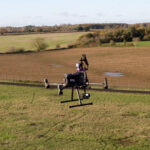The Air Accidents Investigation Branch has published its Annual Safety Review which includes information on occurrences and the safety action taken or planned in response to AAIB investigations concluded in 2022.
The AAIB received 778 occurrence notifications (compared to 746 in 2021, 553 in 2020 and 826 in 2019) and opened two formal and 27 field investigations.
A further 78 investigations were opened by correspondence. There were nine investigations into fatal accidents which involved 11 deaths. All but one involved General Aviation (three light aircraft, two microlights, two gliders and one helicopter).
In 2022, the AAIB published two Special Bulletins, 27 field investigation reports and 85 correspondence investigations.
Safety recommendations of global concern
The Branch issued 19 Safety Recommendations, including two which were classified as safety recommendations of global concern (SRGC). The Review provides details of 101 significant actions to enhance safety taken proactively by the industry in 2022 as a direct result of AAIB investigations.
The recurring themes for General Aviation continued to be loss of control in flight during aerobatics, partial power loss or flight into clouds by unqualified pilots.
The dominant recurring themes in the accidents and serious incidents involving commercial air transport aircraft were mishandling of the aircraft during landing or go-around, complex electrical failures leading to system degradation, and failures to achieve take-off performance.
The Annual Safety Review also contains articles on 100 years of Accident Investigation Regulations and the use of test flights during Aircraft Accident Investigation.
Improved aviation safety
Reflecting on 100 years of accident investigation regulations, Crispin Orr, Chief Inspector of Air Accidents said: “It is remarkable how much aviation safety has improved over the last 100 years through incremental changes to way that aircraft are designed, manufactured, maintained and operated. Almost everywhere one looks across the aviation eco-system there are physical systems and standard practices that have been introduced to improve safety as a direct result of learning from previous accidents and incidents. This has been underpinned by an open reporting culture, and a clear focus on improving safety without attribution of blame.
“That important work continues with increased emphasis on learning from serious incidents. In-depth investigation of these occurrences provides an opportunity to identify safety issues, and make recommendations to address weaknesses, before they become manifest in an accident. This has helped to make aviation one of the safest forms of transport and is an approach that is now emulated across other transport modes and other domains such as healthcare.
“In 2022, the dominant recurring themes in the accidents and serious incidents involving commercial air transport aircraft were mishandling of the aircraft during landing or go-around, complex electrical failures leading to system degradation, and failures to achieve takeoff performance. The recurring themes for General Aviation continued to be loss of control in flight during aerobatics, partial power loss or flight into clouds by unqualified pilots.”
Subscribe to the FINN weekly newsletter

